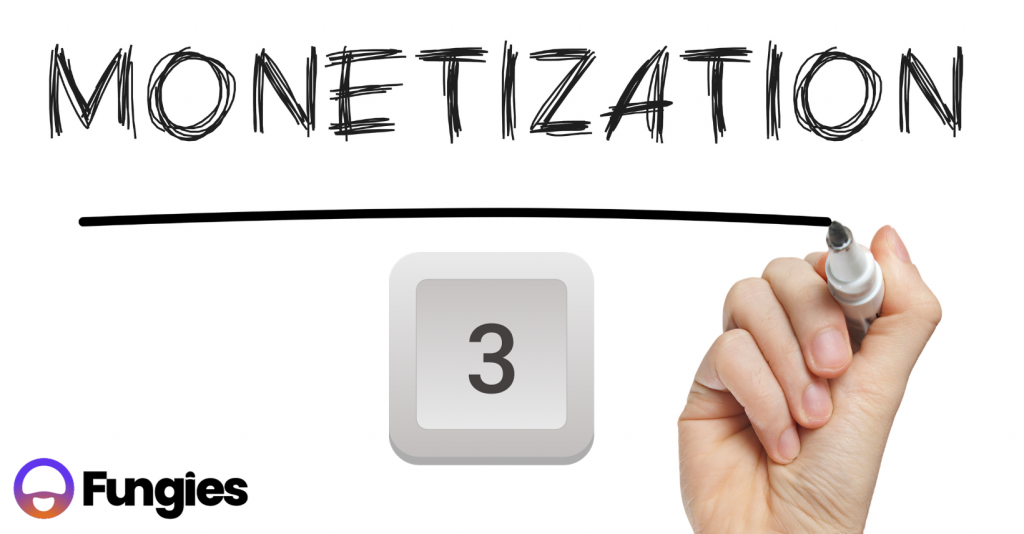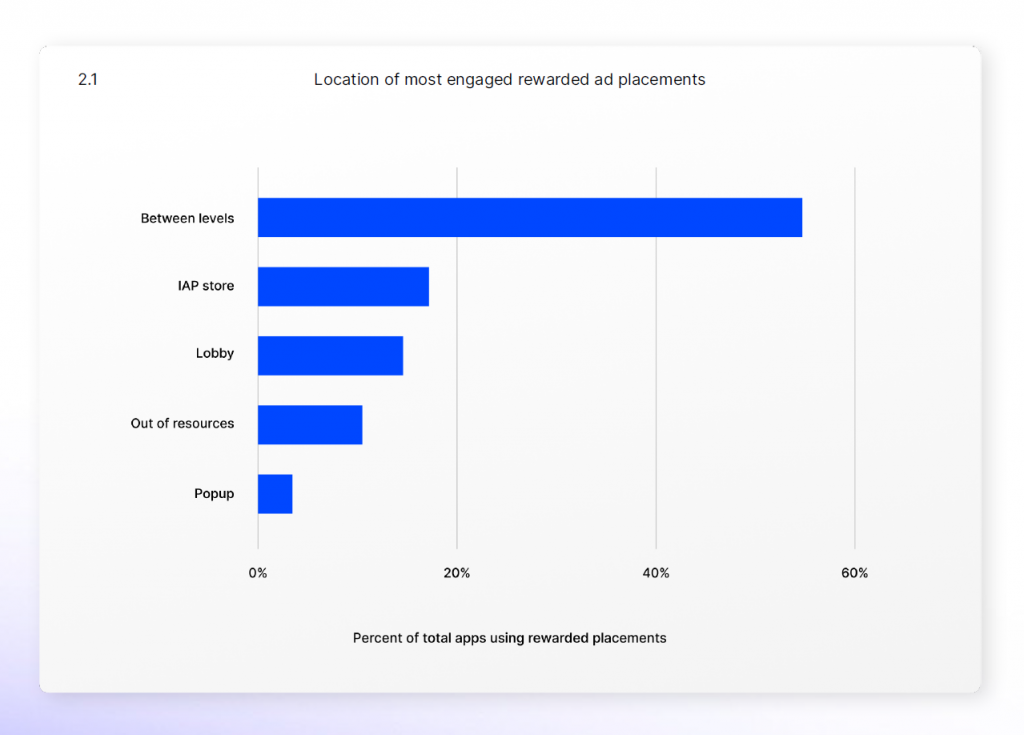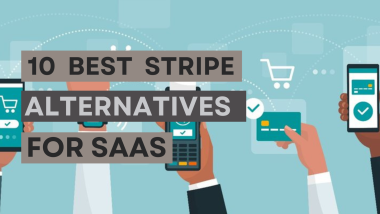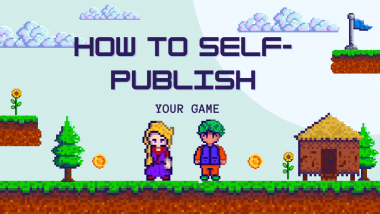“2023 Mobile Growth and Monetization” Report by Unity
The “2023 Mobile Growth and Monetization” report by Unity stands out as an invaluable resource for anyone in the mobile gaming industry, especially indie developers. Compiled by seasoned industry experts, this report dives deep into the current trends and strategies in mobile game monetization, offering a wealth of knowledge backed by in-depth analysis and data. This report isn’t just a collection of data; it’s a roadmap for indie developers seeking to navigate the complexities of game monetization with confidence.

Introduction to Part 3 – Focusing on Monetizing Existing Player Bases and Advertising Efficiency
Welcome back to our series on the “2023 Mobile Growth and Monetization” report by Unity. In the first piece, we provided an overview of the report and a quick overview of its contents. In Part 2, we focused on IAP conversions.
Today, in Part 3 of our series, we explore monetizing existing player bases and advertising efficiency.
The Crucial Role of Monetizing Existing Players
In the dynamic world of mobile gaming, the focus often lies on attracting new players. However, for indie game developers, monetizing existing player bases is equally vital. Existing players, already engaged and invested in your game, present a valuable opportunity for sustained revenue generation. The key is to tap into this potential without compromising the gaming experience that keeps these players engaged.

Insights from the “2023 Mobile Growth and Monetization” Report
The “2023 Mobile Growth and Monetization” report offers a wealth of strategies specifically tailored for indie developers facing these challenges. It emphasizes the importance of understanding player behavior and preferences, which can inform how and when to present ads, as well as what types of in-app purchases might be most appealing.
Understanding Player Engagement and Monetization
The Interplay Between Engagement and Monetization
In mobile gaming, the key to successful monetization lies in understanding player engagement. It’s about identifying what captivates your players, what keeps them returning to your game, and how you can utilize these elements to boost monetization without detracting from their experience. Engaged players are more likely to invest in a game, whether through time, energy, or financial resources.
Leveraging Engagement for Effective Monetization
Players who are engaged are often more receptive to in-app purchases (IAPs) and ads, especially when these elements are perceived as adding value to their gaming experience. The “2023 Mobile Growth and Monetization” report highlights the effectiveness of different ad rewards in driving engagement. For instance, ads offering extra rewards, currency, and gacha mechanics have proven most effective, with engagement rates of 20%, 14%, and 13% respectively. Incorporating these elements strategically can improve both game retention and player engagement.
Offerwalls as a Tool for Engagement and Monetization
In addition to traditional IAPs and ads, offerwalls are a valuable tool for building a resilient in-game economy. They create more options for players at different engagement levels, allowing for varied paths to progress in the game. However, we will discuss them in detail in Part 3 of our series.
Balancing In-App Advertising with Player Experience

Balancing in-app advertising with player experience requires a nuanced approach that considers both the placement and content of the ads. This balance is essential for maintaining player satisfaction and ensuring the long-term success of the game.
The Delicate Art of In-App Advertising
In-app advertising, when executed correctly, offers a significant revenue stream for mobile games. The key challenge lies in integrating these ads in a manner that feels natural and enhances, rather than interrupts, the gameplay. This delicate balance is critical in ensuring that players remain engaged and receptive to the advertisements.
Strategically Placing Ads for Maximum Effect

According to the “2023 Mobile Growth and Monetization” report, the most effective placements for rewarded ad placements are between game levels, within the IAP store, and in lobby/pre-level areas. These placements are highly visible and strategically positioned at points where players are likely to be most receptive. Thoughtful placement of ads in these high-visibility moments can significantly enhance player engagement without disrupting the gaming experience.
Leveraging Reward-Based Ads for Engagement
The report also highlights that certain types of rewards from ads, such as extra rewards (20%), currency (14%), and gacha mechanics (13%), drive the highest engagement. This data underscores the importance of diversifying ad rewards and using them strategically to enhance game retention and engagement. For instance, ads that offer extra lives, unlock powers, or help with player progression can be particularly effective.

Enhancing Player Experience Through Ad Integration
Successful in-app advertising is not just about where and what you advertise, but also how these ads are integrated into the player’s journey. Ads should complement the game’s narrative and mechanics, offering rewards or opportunities that feel like a seamless part of the game world. This approach maintains player interest and can lead to a more positive reception of the ads.
Mastering the Art of Ad Placement and Timing in Mobile Gaming

Mastering the art of ad placement and timing is essential for game developers looking to monetize their games through in-app advertising. By strategically positioning ads and choosing the right moments for their display, developers can create a monetization strategy that is effective and maintains a high-quality player experience.
Strategic Ad Placement for Enhanced Engagement
Ad placement is a critical component of a successful in-game advertising strategy. The ideal placements are those that integrate seamlessly into the gaming experience without causing interruptions or annoyance. Placing ads at natural transition points in the game, such as between levels, is a strategy that can significantly enhance their effectiveness. These moments provide a natural pause in gameplay, making players more receptive to viewing ads.
Timing Ads for Optimal Impact
The timing of ads is just as important as their placement. Ads should be scheduled at moments when they are least likely to disrupt the player’s immersion in the game. For example, showing an ad right after a player completes a challenging level can be a good strategy, as it can serve as a brief pause before they move on to the next stage.

Preserving Game Flow and Player Experience
The overarching goal of ad placement and timing is to preserve the natural flow of the game. Ads should feel like a part of the game’s ecosystem rather than an external imposition. This consideration ensures that players remain engaged with the game and view ads as a positive, or at least neutral, element of their gaming experience.
Balancing Monetization with User Satisfaction
Effective ad placement and timing is a delicate balance between monetization and user satisfaction. While ads are a necessary aspect of the game’s revenue model, especially in free-to-play games, their impact on the player experience should always be a primary consideration. Ensuring that ads are well-timed and strategically placed can lead to higher player retention and a more positive perception of the game.
Optimizing Player Engagement Through Diverse Reward Types and Incentivization
Effectively using different types of rewards and incentivization strategies in in-app advertising is a powerful way to enhance player engagement. By offering a variety of rewards and tailoring them to player preferences, developers can encourage players to interact with ads in a way that feels rewarding and integrated into the gaming experience.
Understanding the Power of Incentivization in Ads

The right incentivization can make all the difference in how players perceive and interact with ads. Offering rewards for viewing or taping ads is a strategy that can turn a potential interruption into a valued part of the gaming experience. The key is to offer rewards that are aligned with the players’ interests and gaming objectives.
Diversifying Rewards for Broader Appeal

A diverse range of rewards can cater to the varied preferences of your player base. In-game currency, for instance, is a universal reward that appeals to most players as it can be used for various purposes within the game. Unique items, such as exclusive skins or special equipment, cater to players who seek something distinctive that sets them apart within the game world.
Tailoring Rewards to Player Preferences
Tailoring rewards to specific player segments can significantly boost ad engagement. For players who enjoy customization, cosmetic rewards like character outfits or unique accessories can be particularly appealing. On the other hand, players who are more focused on gameplay might prefer items that give them a competitive edge, like power-ups or rare equipment. Understanding these preferences and offering targeted rewards can lead to higher engagement rates with ads.
Balancing Reward Value with Game Economy
It’s important to balance the value of rewards with the overall game economy. Rewards should be enticing enough to motivate players to view ads but not so valuable that they disrupt the game balance or devalue other in-game purchase options. This balance ensures that ad rewards contribute positively to the gaming experience without undermining the game’s integrity.
Customizing Advertising to Enhance Engagement in Different Game Genres
Genre-specific advertising strategies are crucial for maximizing the impact and effectiveness of in-app ads. By tailoring ad content and rewards to fit the game genre and player preferences, developers can create a more engaging and seamless ad experience.
The Importance of Genre-Specific Advertising
In mobile gaming, different game genres attract distinct player demographics with varying preferences and motivations. Tailoring your advertising strategies to align with the specific genre of your game can significantly increase their effectiveness and ensure they resonate more deeply with your audience.
Strategic Advertising in Strategy Games

In strategy games, where players often value tactical depth and decision-making, ads offering strategic benefits can be particularly effective. For instance, advertisements that provide in-game resources, tips, or exclusive access to strategic elements can help players progress and thus enhance the gaming experience. These rewards align with the players’ desire for strategic advancement and can encourage deeper engagement with both the game and the ads themselves.
Aesthetic Enhancements in Casual Games
Casual games, known for their broader appeal and simpler mechanics, often attract players who value the game’s aesthetic and relaxation aspects. In these games, ads that offer cosmetic enhancements, such as unique character skins or exclusive background themes, can be more appealing. These types of rewards complement the light-hearted and visually engaging nature of casual games.
Aligning Ad Content with Game Themes
Aligning ad content with the game’s theme and the players’ interests is key to creating a cohesive gaming experience. Ads that feel like an extension of the game world are less intrusive and more likely to be positively received. For example, in an adventure game, ads that offer a mini-quest or a treasure hunt for rewards can add to the game’s narrative and excitement.
Ad Variety and Player Engagement

Offering a variety of ad types and rewards can cater to a broader range of player preferences within a genre. This approach keeps the ads fresh and engaging allowing players to choose the type of ad interaction that suits them best, increasing overall player satisfaction and engagement with the game.
The Continuous Journey of Monetization and Ad Optimization
Monetizing existing player bases and optimizing advertising efficiency in mobile games is not a set-it-and-forget-it task. It is an ongoing journey that demands continuous attention, analysis, and adaptation. The mobile gaming landscape is dynamic, with player preferences and market trends constantly evolving. Staying attuned to these changes is crucial for maintaining an effective monetization strategy.
Key Strategies for Effective Monetization
The core of successful monetization lies in understanding your players. This understanding allows you to balance ad integration in a way that complements, rather than disrupts, the gaming experience. Ads should be thoughtfully integrated into the game, appearing at moments that feel natural and offering rewards that genuinely enhance the player’s experience.
Remember, the goal is to create a monetization strategy that aligns with your game’s unique style and audience while maintaining an enjoyable player experience. By staying engaged with your community and continually refining your approach, you can create a successful and sustainable monetization model for your game.

Also, stay tuned for the next posts in this series where we explore the insights from the 2023 Mobile Growth and Monetization Report by Unity.





